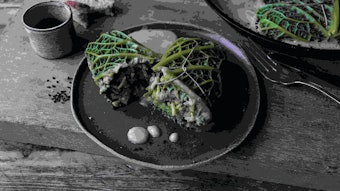Laurel leaves are collected from Laurus nobilis L., which is an evergreen tree or shrub of the Lauraceae family and grows wild in Greece. In ancient Greece and Rome, its leaves and branchlets were used as garlands to be bestowed upon heroes on festive occasions. In modern times annually more than 250,000 kg of dried leaves (sweet bay) are marketed in U. S.A., U.S.S.R. and other countries as a flavoring material in culinary preparations like soups, fish, and ragouts.
In 1965, Pruidze found that the most ideal way of drying laurel leaves is with dry air at 65-70°C. He reported that the oil content of the dried leaves is approximately 3% which is less than that found in fresh leaves. This author also found that the above conditions did not have any adverse effect on the chemical composition of the oil. Finally, Pruidze stated that the optimum moisture content for the storage of leaves is 12%.
According to Guenther, Kekelidze et al., Pruidze and Skrubis, the oil contains mainly 1,8-cineole as the major constituent. Smaller quantities of d-limonene, camphene, sabinene, myrcene, α- and β-pinene, α- and β-phellandrene, p-cymene, geraniol, methyl eugenol, linalool, eugenyl acetate are also found in the oil.










